TC Luoma is someone I have tremendous respect for. In fact, I consider him to be one of the most influential individuals in the history of Strength & Conditioning. He’s had a tremendous impact on spreading “non-bodybuilding” strength training methodology with more of a strength, power, functional, or joint-friendly flare to it. Where other publications would have ignored the various writers and article submissions in their quest to promote hypertrophy-based, traditional training practices, TC saw potential and gave guys like me and methods that don’t fit the “bodybuilding-only” mold a chance.
I’m certain that had I submitted my first article, Dispelling the Glute Myth, to other sites or magazines, I wouldn’t have heard back from them. But TC saw potential and agreed to post the article, and two-and-a-half years later the hip thrust is popular around the world. When I think of it, a vast majority of what I’ve learned today as far as strength & conditioning practices are concerned come from reading TNation. I recently reached out to TC to see if he’d conduct an interview for my blog and much to my chagrin he agreed. Here’s the interview:
1. Hi TC, thank you for agreeing to conduct this interview. First off, what does TC stand for, and why do you go by “TC” instead?
Well, if you go to Wikipedia, or at least the last time I checked it, it suggests that the “T” stands for the descriptor, “Ten-Inch,” and the “C” stands for, well, use your imagination. Seriously. That’s what it said on my Wikipedia entry. Kinda’ makes you doubt the authenticity of some of the other info, doesn’t it?
Anyhow, TC is just the two initials of my first and middle name: Terrence Christian. I’ve always preferred to be called TC and I’ve always used it as my pen name.
2. I’d like to know how you stumbled into the fitness field. Were you always a fitness nut or did a job just fall into your lap?
I’ve worked out as long as I can remember. I remember wanting to start lifting weights when I was ten years old but my mother wouldn’t let me – she said it would stunt my growth. So it wasn’t until high school that I started lifting in the basement. I also read the earlier Weider Magazines and somehow thought I was the only one who liked Arnold and Frank and the rest of the California bodybuilders because nobody I knew in real life in Michigan had ever picked up a weight or even knew who those guys were.
I remember hearing that Arnold was going to do a book signing in a nearby town when I was growing up and I drove a couple of hours to see him. I’d stood in line for about an hour, finally got to the head of the line and some woman started talking to him about some business proposition. He took my book, signed it, and never even looked at me. I was seriously bummed.
I finally met him when I got into the biz, but it wasn’t the same.
Anyhow, years later, I hooked up with a bodybuilding photographer named Ralph DeHaan. He worked for all the mags and when I told him I write, he said he always needed articles to go with his pics. I tried writing one, sent it to MuscleMag, and they bought it. Then I sent one to Muscular Development and they bought it.
I started sending articles to mags all over the country, including some in Europe. Pretty soon I was writing 15 articles a month. I got to know everybody in the business, and then I hooked up with George Snyder and Bill Phillips and started writing most of their magazine, Muscle Media 2000. Within a year, they made me editor-in-chief. A few years later after Phillips decided he wanted to go mainstream, I left and hooked up with Tim Patterson, who had the weird and wonderful idea of starting a website called “Testosterone.”
3. It seems that those Muscle Media days were bitter-sweet times for you. Looking back, what important life-lessons did you learn from the experience?
That everybody in this business has something seriously, seriously, wrong with them. Dat’s a fact, Jack. I learned that business, almost invariably, will eventually exploit people, resources, or the environment. I learned that lots of money, earned very quickly, corrupts people as few things do. I learned that most people climb the corporate ladder by being sniveling, obsequious little worms. I learned that many girls, given enough money, will take their clothes off and do wonderful things, especially in Vegas (Bill used to take groups of us there for recreation).
And those were the good things I learned.
Nah, just kidding. I made a name for myself at Muscle Media 2000, earned enough money to put a down payment on a nice house in San Diego and honed any writing skills I had by writing tens of thousands of words in articles (both under my name and ghost writing for others), books, pamphlet, and ad copy. I also met Tim Patterson, which later turned out to be a very good thing because we started Biotest and T Nation together.
4. You started Biotest and TNation with Tim Patterson out of his garage in Colorado. What was your and Tim’s initial vision for the company?
A small correction, Bill Phillips started his company out of his mother’s garage in Colorado. We started Biotest and T Nation out of a small office building in Colorado Springs. Tim, along with Dr. Mike Leahy, were running a medical practice that was built around ART. Tim started building Biotest out of that same building while concurrently running the day-to-day doings of the ART business.
Our first “warehouse,” however, was a former gas station right next door to the ART practice.
Anyhow, we initially wanted to be a better version of the old Muscle Media 2000 had been, before it went mainstream – an entertaining and innovative source of ground breaking information on training, diet, and supplementation that didn’t suffer fools gladly but liked to make fools suffer. Similarly, we wanted to make hugely effective supplements that WE wanted to use; if anybody else wanted to use them, i.e., customers, than great. We’d have our protein cake and eat it, too.
5. Did you ever think back then that TNation would end up being so popular, and how did your and Tim’s vision for the company morph over time?
Yeah, I did think it would be as popular as it is. And as far as how our vision has morphed, it really hasn’t. We’re still passionate about training, whether it’s strictly bodybuilding training, or training to be as functionally brutal and bad-ass as the type MMA fighters. We also still build supplements WE want to use. If you want to use them, too, great.
That’s something that kills me. A lot of times people contact us and ask whether we used such-and-such a crappy or inferior ingredient in one of our products and I think to myself, “You moron. Why would Tim or I put some crappy ingredient in a product that we built for ourselves?
6. Do you feel that TNation is the crème de la crème for strength & conditioning writers? If so, why?
Absolutely. Just about anybody who’s anybody either started out with us or writes for us now. It sounds bad, but sometimes people ask me about if I’ve heard of some obscure coach and I think, perhaps mistakenly, “Hell, if he were anybody I’d already know about him and he’d be writing for us.”
7. Several years back you wrote a book titled Atomic Dog: The Testosterone Principles. I actually bought four copies; one for me, one for my twin bro, and one for each of my two step brothers. The book resonated with me because I feel that most men these days lack integrity, fortitude, and testicular-power. What’s wrong with our current generation of men?
Thanks! That’s really gratifying to hear.
What do I think is wrong with today’s men? Where do I start? Fear. Uncertainty. Lack of identity. Lack of true self worth. Obsession over any perceived slight. A lack of a definition of what true manhood is. Believing that money or material possessions are synonymous with accomplishment. I could write a book. Wait, I have!
8. I suppose you’ve seen it all when it comes to strength training. Since TNation’s inception in 1998 (then it was Testosterone.net) we’ve seen articles from the likes of Ian King, Charles Poliquin, Paul Chek, Dave Tate, Christian Thibaudeau, Dan John, Chad Waterbury, Alwyn Cosgrove, Eric Cressey, Mike Robertson, Michael Boyle, Joe DeFranco, Nick Tumminello, Tim Henriques, Tony Gentilcore, Jim Wendler, Ben Bruno, and even some asshole named Bret Contreras. It’s basically a laundry-list of S&C rock stars. What 3 individuals have made the most significant impact on your training?
Man, I feel like a Hollywood starlet who’s been asked which of her leading men was the best lay. This sounds like I’m being diplomatic, i.e., being a slimy politician talking out of both sides of his mouth, but I’ve stolen from all the guys you’ve listed. Each one of them has things to offer to T Naiton and to me. Otherwise, their stuff wouldn’t have been posted on T Nation.
For instance, I was just doing Bret Contreras glute thrusts yesterday. I’m using some of Wendler’s 531 stuff, too, and I routinely use Christian Thibaudeau’s methodologies, too.
I will say that Poliquin was the first to make me radically change my approach. Before Poliquin, it was 3 sets of 8 for not only me, but virtually everyone who lifted weights. (Bret’s note: I think Charles Poliquin, and possibly more so Ian King, influenced strength coach practices more than any two individuals in S&C)
9. Speaking of strength training, how do you currently train? Are you a bodypart split guy, a lower/upper split guy, or a total body training guy, and what are your goals?
I’m a push/pull guy. After all these years, after trying everything, it’s what makes the most sense to me and what works best for me. I lift 3 or 4 days a week and I have to confess, I’m a grinder (even though Christian and Tim are trying to cure me of this habit). I like extended sets, drop sets, multiple no-rest, make everything burn so at the end you have to drop the weights and make an ugly face until the pain goes away. It’s just my nature. Otherwise, I don’t feel like I worked out.
I also work the Prowler one or two days a week, along with riding a modified mountain bike up and down the local thousand-foot “mountain.”
My goals right now – and they may change in a few months, such is the nature of the beast – is simply to get as strong and conditioned as I can while remaining essentially the same weight. I have virtually no cartilage in my left knee – the result of a football injury – and I find that I can keep the nagging pain away if I stay reasonably light.
10. Here’s a random question. Have you ever noticed that many “gurus” in S&C seem to get really strange over time? What’s up with Gurus Gone Crazy?
I know, I know. Here’s what I often tell new writers. “Here’s how it will be. You’ll start writing for us. You’ll gradually grow to be very popular and make a lot of money. You’ll adore us. Then, things will change. The fame will affect you. You’ll star to castigate us for not treating you like the star you are. Your shipment of Anaconda and Indigo-3G will be a day late and you’ll threaten to sue us. You’ll leave, thinking you don’t need us, and at least 5 out of 10 times, you’ll fade into obscurity and spend your days in the park trying to teach pigeons how to Bulgarian squat.”
11. What irks you the most in regards to article submissions by prospective contributors, and what sort of writers and articles catch your eye?
The thing that bugs me is guys who submit articles without having studied the T Nation site. They send me articles on stuff that we’ve written about the week before. They’ll send me articles that are too simplistic for the Parade Magazine that comes bundled up with the Sunday paper. I don’t get it.
As far as what catches my eye, I usually defer to one thing, and that’s if the article makes me want to try whatever it is they’re writing about. If I’m interested in it, chances are the readers will be, too.
12. Do you have any advice for upcoming S&C writers?
Don’t get too immersed in studies. Instead, use experiential evidence. In other words, studies aren’t the end-all and be-all. I read them and they’re fascinating to me, but studies are often poorly designed. They’re often overlooking or missing certain intangibles. For instance, I bet if some researchers took a group of test subjects and decided to test Westside barbell’s methodologies on them, they wouldn’t get nearly the results that the real Westside does. The real training has intangibles that the research would lack, like being screamed at by a bunch of guys who look like stone killers, or having heavy metal music blasting out at 110 decibels.
Studies are great, but if you depend solely on studies, you’re just writing book reports. A literate high school kid could do the same thing. I prefer guys who read stuff and then test it out themselves.
Similarly, I sometimes get PhD nutritionists writing for us who simply can’t, because of their formal education, make a deductive leap about something. They’ll stammer that the research hasn’t proven it yet, and while every piece of evidence points to a certain conclusion, they’re unable to make the small leap. You want to smack them on the head. Hell, this sport or activity or passion, whatever you want to call it, was built on deductive leaps.
13. Word on the street is that you’ve just written a new book titled Manhood and Other Stuff: The Testosterone Principles II. Is this correct?
Oh, finally, my reward for doing this interview! I get to plug my new book!
Yes, that’s true. The alleged national campaign kicks off in April, but the book is currently available on Amazon and Barnes and Noble in both hard and soft cover. Like the first book, it’s about manhood.
As far as what it’s about, I’ll just give you the synopsis I just sent to the publishers. It’s probably a little longer than you expected, but what the hell, we’re not killing any trees here:
This book is about manhood, and, well, other stuff. But let’s address the manhood thing first.And I know what you’re thinking. You’re thinking the type of manhood that worships monster truck rallies and nacho fries and fast cars; that paints its bare chest green and sits in the subzero stands of Lambeau Field with a hunk of plastic cheese on its head while bellowing like a gutted Klingon; that communicates largely by grunting, belching, or telling fart jokes.You know, all that stereotypical crap.But that’s not what I had in mind. In fact, I had this notion of manhood that combines the do-goodedness of the Boy Scouts with some heaping doses of self-determination and pragmatism, sprinkled with a dollop of Testosterone, and seasoned with a few fistful-size pinches of Howard Stern.From my experience and observations, men and boys are in some serious need of a new definition of manhood. Men by and large don’t have a masculine identity that’s much different from the one-dimensional and infantile masculinity epitomized by professional athletes or by the characters in Hollywood action movies or, worse, yet, television sitcoms.But there’s a yin to the masculine yang I just described, and neither side is very pretty.There’s a whole other breed of man who, despite rejecting silly Maxim Magazine notions of manhood, has gone completely in the other direction, only slowing down to do some occasional antiquing. Their balls were either cut off metaphorically by society, circumstance, or disapproving wives who put them in a Mason jar and stored them in the shed behind the pickled beets.As a result, many kids don’t have fathers anymore; the traditional American family consists of two “moms,” one with a traditional vagina and one with a penis and testicles that acts like a mom. A lot of wives don’t have husbands anymore – they gave their wedding vows to yet another son who, despite being in his 30′s or 40′s or beyond, has to be told what to do and scolded when he’s bad.The other type of man I described earlier, the beer-swilling, monosyllabic slobs? Oh, he gets married and has kids, too, but he doesn’t stay married very long — if his wife has any sense, that is.So I wrote the columns that make up this book. Most of the articles are about some aspect of my version of manhood, along with the occasional observation about new developments in science or psychology, along with a healthy dose of popular culture and sex (the “other stuff” referred to in the title).I’m hoping against all odds that it helps, at least a little bit, to set things right, or at least generate a little discussion and a lot of laughter.
14. I believe that TNation has been the single most influential website in the past two decades in terms of positively influencing the training practices of lifters worldwide. We have you to thank for helping spread sound training methods, and for this you should feel a sense of achievement. What’s your most proud accomplishment in life thus far?
Thanks! That’s nice of you to say.
As far as being “proud,” I have to take issue with that word. Don’t worry, I’ll be brief. I think pride is an immature emotion. It means I allegedly have done something (or even bought something) that I hope will convey superiority over someone else. I prefer the word “satisfaction,” as in what accomplishment has given me the most satisfaction? In other words, what have I done that was truly useful or life affirming?
First, it’s immensely satisfying when I hear you say that my first book helped your brother “man up.” I hear that type of thing a lot and it’s enormously satisfying. Secondly, I’m happy that it seems that I’ve helped spread what is often –not always – a healthy life style. From what I can see, a lot of people are healthier, fitter, able to enjoy life more, and happier because T Nation exists.
That’s very cool.
15. Thanks again for your time TC. I have one last question. My last several dogs were Min Pins, Dachshunds, or Chihuahuas – all small dogs. I imagine that you’re a Pit Bull, Doberman, or Ridgeback type of guy. Am I correct?
I’ll admit, I have a weakness for masculine dogs. I have two English Staffordshire Bull Terriers and they’re regarded as second cousins to pit bulls. Truth is, they were originally used for fighting in the pit in England by the coal miners that developed the breed, and they would tie a bear to a wall and have a small group of these dogs fight the bear. Pretty weird, huh?
But this breed has been domesticated over the years. In fact, they’re now called “nanny dogs” in England because of their reputation with children. That’s good, because it’s frowned on when you have dogs that actually eat kids.
Anyhow, I like the dogs because they’re relatively small, but with very thick, muscular bodies. They’re canines with the bodies of bodybuilders, coupled with the athleticism of an NFL running back. My male, Tommey, was born from the frozen sperm of a champion dog that had been dead for over ten years. I feed him organic meats, vegetables, and Biotest supps. Hell, we should put him on the label of some of our products.
Wikio
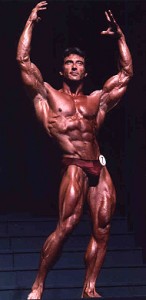
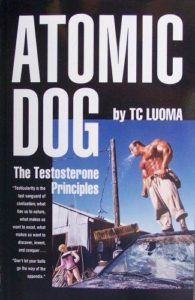
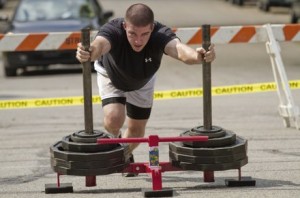
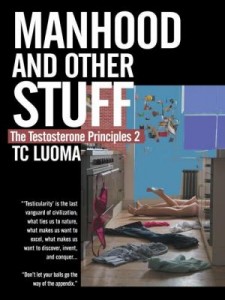












 This should be pretty obvious to most people by now, but there are still the old die-hards out there who swear that everyone should be consuming two grams of carbs per pound of bodyweight every day while maintaining a low fat intake. Load up on whole grains and fruit while cutting down on healthy, essential sources of fat like grass fed beef they’ll tell you.
This should be pretty obvious to most people by now, but there are still the old die-hards out there who swear that everyone should be consuming two grams of carbs per pound of bodyweight every day while maintaining a low fat intake. Load up on whole grains and fruit while cutting down on healthy, essential sources of fat like grass fed beef they’ll tell you.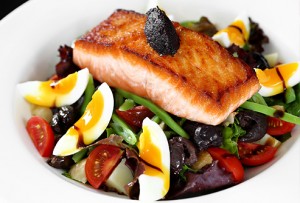 In my experience it’s usually only females who are guilty of this but guys can make this mistake on occasion as well. The average female who can’t lose body-fat usually eats a bowl of oatmeal for breakfast with an egg. One… single… egg.
In my experience it’s usually only females who are guilty of this but guys can make this mistake on occasion as well. The average female who can’t lose body-fat usually eats a bowl of oatmeal for breakfast with an egg. One… single… egg. “What?! You’re telling people not to eat fruit!? Everyone knows that it’s impossible to get fat from eating too much fruit!”
“What?! You’re telling people not to eat fruit!? Everyone knows that it’s impossible to get fat from eating too much fruit!”